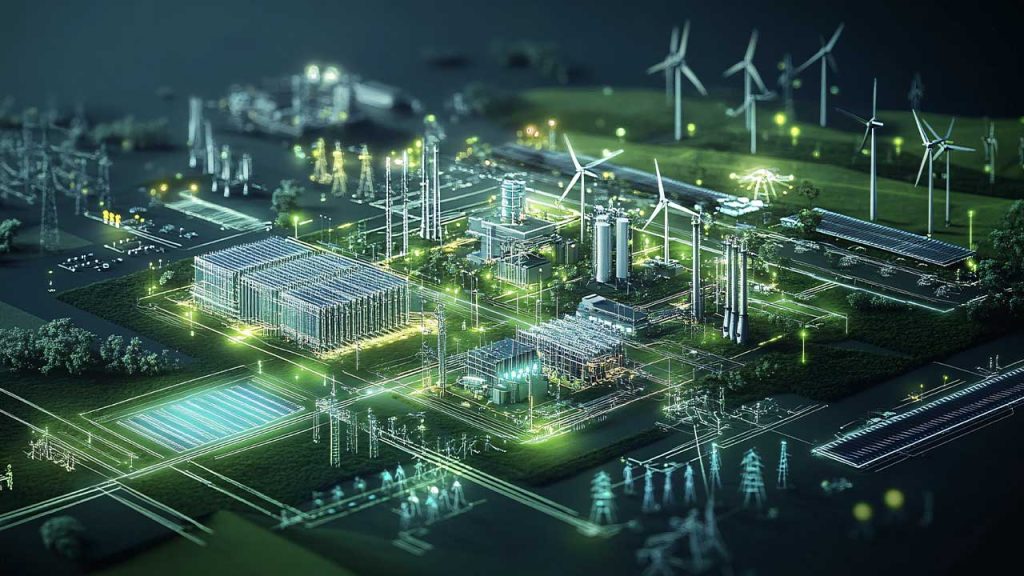How Internet of Things Modernizes Outdated Utility Infrastructure
Connected devices and sensors support automated energy management and delivery, seamless integrations and predictive maintenance.
It’s no secret that much of the US electric grid urgently needs an upgrade. The 1960s and 70s saw the construction of most of the infrastructure, with 70% of the transmission lines exceeding 25 years of age. This aging system is struggling to meet modern electricity needs brought about by the push for renewable energy and the increase in electric vehicle drivers. Failure to modernize promptly could result in anything from widespread power outages to heightened risks of cyberattacks.
Thankfully, efforts are underway to modernize utility grids through cutting-edge Internet of Things (IoT) technologies, which include advanced communications equipment and software to manage and track infrastructure. Implementing IoT will optimize energy management and delivery, streamline the integration of legacy utility infrastructure with modern advancements and enable predictive maintenance capabilities to prevent failures.
Enhanced Energy Management and Delivery
Utilities can deploy connected IoT devices, sensors, meters, digital controls and analytics tools across their networks to add a layer of digital intelligence to the aging grids. These connected devices will transform energy management and delivery by automating, monitoring and controlling the two-way flow of energy across operations.
The true value of IoT for utilities is its ability to capture data, permitting real-time monitoring and control. Utility companies can gather real-time data on energy consumption, grid conditions and other energy-related metrics by strategically deploying IoT devices. Artificial intelligence (AI) tools then analyze this data to optimize energy distribution and automate demand response.
Automating energy management and delivery improves overall efficiency and saving costs while reducing energy waste and preventing outages. For example, utility companies use IoT technologies and industrial cellular routers to restore outages more quickly when they do occur. Likewise, businesses and individuals can use IoT-enabled meters to detect wasteful consumption and adjust their energy usage proactively rather than reactively after receiving an expensive bill.
Integrating Legacy Infrastructure with Modern Advancements
Legacy utility infrastructure refers to older systems such as coal-fired power plants, outdated transmission lines, old distribution transformers, legacy metering systems, etc. While past its prime and needing upgrades or replacements to meet current energy demands, this infrastructure still provides essential services.
IoT technologies allow utilities to incorporate renewable energy and other advanced technologies without overhauling their entire infrastructure. IoT gateways, for example, act as intermediaries between IoT devices and legacy systems, allowing them to communicate. Unlike traditional infrastructure projects that are disruptive, expensive and time-consuming, IoT helps facilitate a more gradual transition to modernization, enabling utilities to maximize the lifespan of their built infrastructure.
Several notable technologies that IoT plays a pivotal role in helping legacy utility infrastructure integrate with are AI and machine learning (ML). Specifically, IoT platforms and middleware solutions bridge the gap between legacy systems and these modern technologies by translating data formats and protocols. Integrating AI and ML with legacy infrastructure and assets opens the door for new use cases like remote monitoring and management, digital twins and advanced data analytics.
New routers with advanced capabilities also allow applications to run directly at the edge, bringing intelligence closer to where data is generated. These centrally managed routers permit utilities to consolidate multiple pieces of site infrastructure and add new functionality without implementing additional equipment.
Simultaneously, these routers reduce the complexity of managing IoT devices. Instead of managing routers on site with Supervisory Control and Data Acquisition clients in separate systems, utilities can manage and administrate everything, including edge computing, through a single remote management platform. This approach is especially valuable in IoT use cases, such as sensor monitoring, where a utility runs an application directly on a router instead of a separate on-site computer, thereby reducing hardware requirements and simplifying system management.
Predictive Maintenance
One of the most impactful applications of IoT for utilities is predictive maintenance. Connected sensors deployed across existing utility networks collect real-time data such as vibration, temperature, presence of moisture, etc., and analyze it against historical failure patterns and performance levels. This analysis allows utilities to spot the telltale signs of potential failures early and schedule the requisite maintenance to avert catastrophe.
A common use of predictive maintenance involves utilities monitoring transformer health in power grids to predict and prevent potential outages. Power outages are often associated with upticks in crime and can also be life-threatening in cases where they affect hospitals or assisted living facilities. To that end, predictive maintenance solutions powered by IoT technologies help utilities ensure safer communities.
Additionally, predictive maintenance helps utilities reduce maintenance costs. When equipment or machines break, the funds required to fix them can be enormous; however, with predictive maintenance, technicians only need to make minor repairs or replacements, which are much cheaper. Predictive maintenance also improves worker safety. Compromised electrical infrastructure can be dangerous, putting the well-being of technicians at risk. Scheduled repairs are considerably safer by comparison.
Final IoT Consideration: Connectivity and Remote Management
Connectivity is at the heart of IoT and grid modernization. Reliable connectivity is essential for enabling real-time communication between machines and systems. Nevertheless, deploying secure, resilient and low-latency connectivity in remote environments can be difficult. Many traditional solutions often lack edge computing capabilities and robust remote management tools.
Ideally, utilities should, in addition to IoT technologies, seek out rugged industrial routers that can support edge intelligence and endure harsh environmental conditions. Moreover, utilities need a secure management platform to monitor and manage all their distributed devices. Such a platform must permit utilities to diagnose and update IoT devices from anywhere, eliminating costly on-site visits and ameliorating large-scale modernization efforts.
About the author
 Philip De Carlo is a Senior Field Applications Engineer at Digi International with deep expertise in wireless communications and systems engineering. He has led high-volume manufacturing and design projects, managed multi-million-dollar contracts with the U.S. Air Force, and directed the development of advanced GPS technologies. A former Canadian Naval Officer, Philip also brings hands-on experience deploying wireless networks across North America and Japan.
Philip De Carlo is a Senior Field Applications Engineer at Digi International with deep expertise in wireless communications and systems engineering. He has led high-volume manufacturing and design projects, managed multi-million-dollar contracts with the U.S. Air Force, and directed the development of advanced GPS technologies. A former Canadian Naval Officer, Philip also brings hands-on experience deploying wireless networks across North America and Japan.



